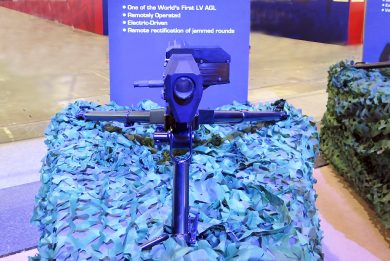IMDEX 2025 – Singapore Navy demonstrates MARSEC unmanned surface vessels with advanced autonomous navigation and collision avoidance systems
On Wednesday May 7 during the IMDEX 2025 exhibition in Singapore, the Republic of Singapore Navy in collaboration with the ST Engineering invited the media to the Changi Naval Base for a live demonstration of the MARSEC (Maritime Security) Uncrewed Surface Vessels (USV) deployed by the service Maritime Security Task Force, notably in the Singapore Strait
These units represent a major advance in autonomous maritime security patrol operations, combining cutting-edge technologies in autonomous navigation, collision detection and remote management. The MARSEC USV is designed by ST Engineering in collaboration with the Defence Science & Technology Agency (DSTA) and DSO National Laboratories in Singapore. ST Engineering plays a central role in the integration of autonomous navigation, collision detection and avoidance systems, as well as remote management and predictive maintenance.
The MARSEC is 17 metres long and 5 metres wide, and is powered by two diesel engines driving water jets that allow maximum speed in excess of 25 knots, endurance ensuring more than 36 hours of patrol operations.
The USV is fully autonomous and supervised by two shore-based operators. Initial trials were carried out with a reduced crew on board, but current deployments are entirely unmanned, thanks to an autonomous navigation system developed by ST Engineering, which enables the vessel to plan and execute routes without direct human intervention. This system incorporates artificial intelligence (AI) capable of interpreting international navigation rules (COLREGS) and making decisions in real time to avoid collisions. The autonomous navigation system was tested for more than 12 million simulated km and over 1,000 hours without incident; during testing it proved its ability to carry out surveillance, interception and deterrence missions. Its operations are coordinated with manned vessels, optimising the allocation of human resources, and extending surveillance coverage.
To do this, a dedicated Collision Detection and Avoidance System (CDCA) continuously analyses the ship’s environment using radar, sensors, and electro-optical cameras. This technology enables the boat to automatically identify and avoid obstacles or other vessels, even in dense maritime traffic conditions.
The perception suite is equipped with a navigation radar and stereovision for enhanced situation awareness. It’s also equipped with electro-optic sensors with laser range finder, audible and luminous warning system, a remotely operated 12.7 mm weapon, and a dazzling laser.
During the demonstration, the vessel operated autonomously, navigating and holding position without remote control. Using GPS-based dynamic positioning, it could “hover” in place – a challenging feat on water. The autopilot system by ST Engineering maintained a straight course with high accuracy and no deviations. Additional manoeuvres included sharp turns within a tight turning circle and stable position hold while executing heading changes, showcasing the vessel’s precise control and responsiveness under autonomous operation.
ST Engineering has delivered three of the four MARSEC USVs planned for the end of 2024. The programme continues to be refined to enhance maritime security and optimise the effectiveness of Singapore’s naval forces.
In summary, ST Engineering’s unmanned MARSEC vessels are autonomous, robust, and highly technological maritime surveillance platforms, designed to operate without a crew and incorporating advanced detection, armament, and remote management systems, giving the Singapore Navy a significant operational advantage in securing its waters.
Photos by J. Roukoz







